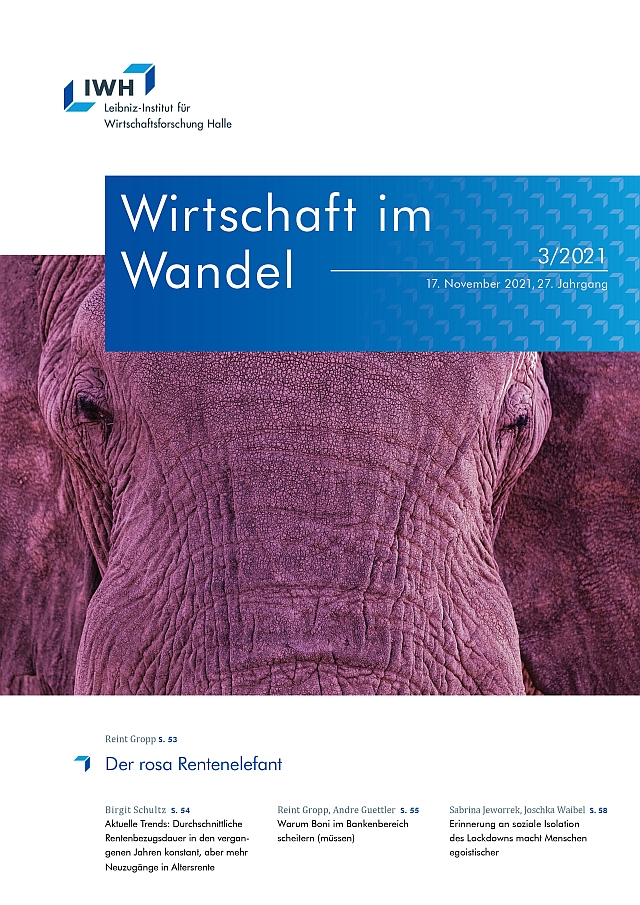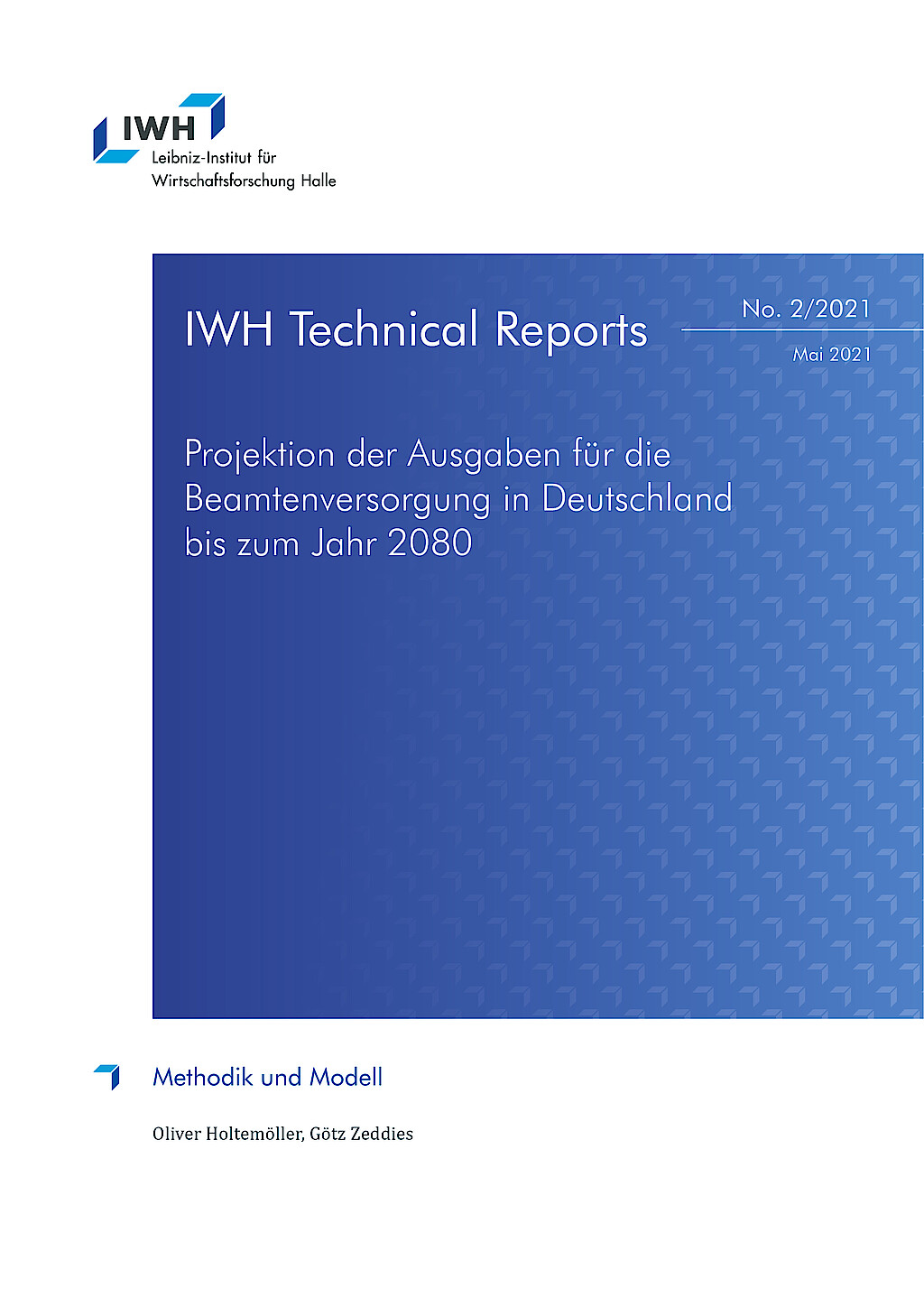
In a nutshell
Many thousands of refugees flocked to EU member states in 2015 and 2016, especially to Germany. As has been widely and controversially discussed. The much more serious and longer-term problem of demographic change has been adeptly sidestepped, however. Although it may sound unpopular to some: immigration is vital for Germany, as there is no other way to offset demographic change. This is because the population is constantly ageing and neither the labour market, municipal infrastructure investments, nor the German pension system are currently adequately prepared.
Our Expert

President
If you have any further questions please contact me.
+49 345 7753-700 Request per E-MailAll experts, press releases, publications and events on "Demographic Change"
Europe's century-long task
The increasingly ageing population is already high on the political agenda and will pose a major challenge for the next generation. If things remain as they are, today's children will have to pay much higher pension contributions than their parents and grandparents – and receive considerably less money in return when they are old. Although demographic change is considered when adjusting pensions, this is not sufficient to prevent the scenario just described. There are certainly alternatives, however, to the existing system. For instance, pension levels at retirement age could be fixed at current levels, or even slightly higher, and the pensions of those who have already retired only be increased in line with inflation. Living standards would therefore be maintained. On the other hand, people's work-life balance must be improved, so that couples are not afraid to have children. Almost 10 years ago, the IWH determined that women only continue to work part time after having children, particularly in western Germany.
Germany's towns are also paying too little attention to demographic change and thus the future. They primarily make investments based on the current financial situation and too little on how the population will develop in future. If towns continue to do this, some will be chronically under-funded and others over-funded in 20 years' time.
Another problem is the shortage of skilled workers. In order to make it attractive for well-trained specialists to move to Germany from overseas, a targeted immigration policy is required. The projects launched to date, such as Blue Card, have not been as successful as hoped. So Germany currently remains isolated from the international pool of highly-qualified workers. A points-based system could be a promising alternative.
At the same time, Germany is facing the huge humanitarian dilemma of refugees; the enormous wave of migration since 2015 is placing considerable demands on Europe. The asylum system in Europe still has major shortcomings. A coherent European asylum policy is currently more important than ever, but the refugees have been very unevenly distributed within Europe. The IWH mooted a strategy for their equitable distribution back in 2015, which takes into account both the allocation of people and the costs.
In addition, the state must sustainably manage the integration of newcomers into our culture and labour market. This also includes improving social mobility within our society, in order to provide immigrants with good training opportunities. "Germany has been asleep for the last ten years. We have not seriously considered how we will handle our population development in 15 years' time," says Reint Gropp, President of the IWH in an interview with Mitteldeutsche Zeitung.
Despite the intake of 1.2m refugees over the past two years, Germany’s population suffers a serious decline. Especially in Eastern Germany total population shrinks. According to the OECD, about half of asylum-seekers who started off in eastern Germany in the past moved to places such as Hamburg once they secured their permit.
Whether and how this country can make economic use of the opportunities presented by immigration is currently still under discussion. Integration is a fundamental part of this debate. Due to the complexity of the issue, an interdisciplinary, scientific approach, such as that of the ‘Crises of a globalised world’ Research Group, is essential, in order to understand the reciprocal mechanisms and dynamics. For example, analyses by the IWH show that measures to cope with immigration during late 2015 triggered additional economic impetus. National and regional governments increased their budgets, while spending on housing, food, medical care and general support for refugees fuelled demand and production, especially in the construction and hospitality sectors, as well as in professional services. According to calculations by the Joint Economic Forecast Project Group, migration-related expenditure across Germany contributed 0.1 percent to the growth in gross domestic product in 2015.
Today, one in 113 people in the world is considered to be a refugee – 65 million in total. In order to resolve the complex ‘asylum’ problem, politicians need to be much better organised and ideally develop collective actions. This is the only way to achieve a solution that is as efficient as possible – and above all humanitarian.
Demographic change is profoundly affecting various social spheres, yet is still underestimated by politicians and citizens. Pensions, future investments, migration – all these things are having a direct, immediate impact on people in Germany. Which is precisely why timely, sustainable solutions are required that do not simply pay lip service to sustainability.
Publications on "Demographic Change"

Kommentar: Weniger Krisenmodus und wieder mehr Wettbewerb, bitte!
in: Wirtschaft im Wandel, No. 4, 2021
Abstract
Ende November kam die frohe Kunde aus Nürnberg: Die Arbeitslosenzahlen sind weiter gesunken, sogar den zehnten Monat in Folge. Was auf der einen Seite erfreulich ist, zeigt auf der anderen Seite, dass Arbeitskräftemangel eines der größten Probleme der deutschen Wirtschaft ist.

Kommentar: Der rosa Rentenelefant
in: Wirtschaft im Wandel, No. 3, 2021
Abstract
Das Sondierungspapier von SPD, Grünen und FDP ist in einigen Punkten überraschend konkret. Zwölf Euro Mindestlohn, keine Steuererhöhungen, die Schuldenbremse bleibt, ein Bürgergeld, Bürokratieabbau, eine Solardachpflicht. Abgesehen davon, dass unklar bleibt, wie ohne Steuererhöhungen und mit Schuldenbremse die Ausgaben finanziert werden sollen, ist das Papier allerdings in einem entscheidenden Punkt erstaunlich vage: Wie sollen die Renten vor dem Hintergrund des demographischen Wandels finanziert werden?

Aktuelle Trends: Durchschnittliche Rentenbezugsdauer in den vergangenen Jahren konstant, aber mehr Neuzugänge in Altersrente
in: Wirtschaft im Wandel, No. 3, 2021
Abstract
Aufgrund des demographischen Wandels gibt es seit einiger Zeit eine Diskussion über die Erhöhung des Renteneintrittsalters zur Stabilisierung der Finanzierung der Altersrenten. Diese wird in der Öffentlichkeit teilweise sehr emotional geführt, da ein Teil der künftigen Rentnerinnen und Rentner befürchtet, finanziell schlechter gestellt zu werden oder durch einen späteren Renteneintritt unerwünschte gesundheitliche Folgen tragen zu müssen.

Projektion der Ausgaben für die Beamtenversorgung in Deutschland bis zum Jahr 2080
in: Wirtschaft im Wandel, No. 2, 2021
Abstract
Seit einigen Jahren steigt die Zahl der Pensionäre in Deutschland. Der demographische Wandel dürfte die Versorgungsausgaben von Bund, Ländern und Gemeinden in den kommenden Jahren und Jahrzehnten deutlich zunehmen lassen. In diesem Beitrag wird die Zahl der Versorgungsempfänger bis zum Jahr 2080 vorausgeschätzt und die Versorgungsausgaben werden projiziert. Im Ergebnis zeigt sich ein teilweise deutlicher Anstieg der Versorgungsausgaben der Gebietskörperschaften. Im Verhältnis zum erwarteten Zuwachs des Steueraufkommens fällt dieser jedoch beim Bund vergleichsweise moderat und auch bei Ländern und Gemeinden nicht übermäßig hoch aus. Dies geht unter anderem auf die Annahme zurück, dass der Anteil der Beamten an der Gesamtbevölkerung in Zukunft konstant bleibt. Dagegen steht die gesetzliche Rentenversicherung größeren finanziellen Herausforderungen gegenüber, weil der Anteil der Rentenempfänger an der Gesamtbevölkerung in den kommenden Jahren zunehmen wird.

Projektion der Ausgaben für die Beamtenversorgung in Deutschland bis zum Jahr 2080
in: IWH Technical Reports, No. 2, 2021
Abstract
In den vergangenen Jahren hat die Zahl der Pensionäre (ehemalige Beamte, Richter und Soldaten) in Deutschland deutlich zugenommen. Damit gehen immer höhere Versorgungsausgaben einher, die Bund, Länder und Gemeinden aufbringen müssen. Der demographische Wandel könnte in Zukunft nicht nur ausgabeseitig eine Herausforderung aufgrund weiter steigender Versorgungsausgaben darstellen, sondern auch auf der Einnahmeseite, weil die Versorgungslasten von immer weniger Steuerzahlern getragen werden müssen. Im Folgenden werden mit Hilfe eines Kohorten-Komponenten-Modells die Zahl der Versorgungsempfänger und die daraus resultierenden Versorgungsausgaben für Bund, Länder und Gemeinden bis zum Jahr 2080 geschätzt und die Konsequenzen für die öffentlichen Haushalte abgeleitet. Es zeigt sich, dass die Versorgungsausgaben der Gebietskörperschaften zwar ansteigen, die Versorgungs-Steuerquote insgesamt allerdings relativ stabil bleibt. Da die Zahl der Versorgungsempfänger bei Ländern und Gemeinden bis zum Jahr 2080 kaum zunehmen und beim Bund sogar zurückgehen wird, stehen die Gebietskörperschaften infolge der Pensionslasten vor weitaus kleineren finanziellen Herausforderungen als die gesetzliche Rentenversicherung angesichts des wachsenden Anteils der Rentenempfänger an der Gesamtbevölkerung.



